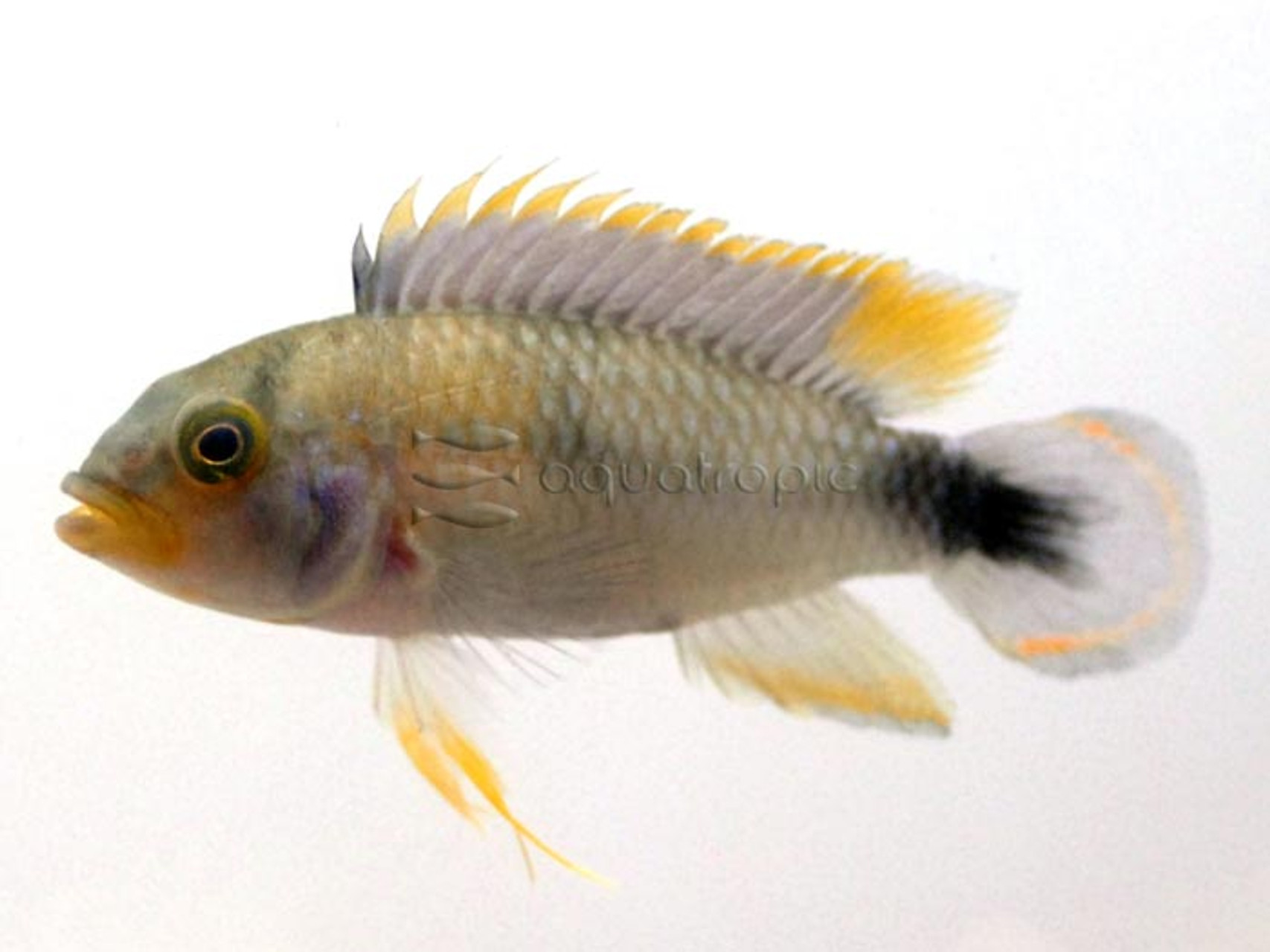Panduro Dwarf Cichlid (Apistogramma panduro)

Apistogramma panduro is a relatively recently described member of the enormous dwarf cichlid genus known to aquarists as apistos. The type specimens were collected in Northern Peru, from the Río Tahuayo, a tributary of the larger Amazon river system, and the species is also known form the Rio Ucayali to the north. The collectors were aquarium exporters (both named Panduro), and these specimens found their way into the hands of German aquarist and ichthyologist Uwe Romer, who named this fish in 1997.
The species belongs to the A. cacatuoides complex, which has many representatives in Peru, but this one is easily told apart from its close cousins (like A. nijsseni) thanks to the large black marking present on the caudal peduncle. Males are mostly blue, save for the dark caudal spot and a thin orange band in the caudal fin. Females are mostly yellow, with dark markings along the breast and into the midbody and on the anterior portion of the dorsal fin. These become especially prominent when spawning or agitated.
Smaller fish tanks are best suited to housing a single male specimen or pair of this species, as multiple males will tend to get rowdy amongst themselves. A diet heavy in meaty foods like bloodworms and blackworms will encourage spawning, with eggs being laid in crevices and the fry guarded by the female. Slow, almost stagnant, water flow is favored, as this mimics the natural habitat favored by apistos. Most breeders rely only on sponge filters to accomplish this gentle water movement. Aquatic plants, dead leaves, and driftwood are the ideal decorations.
A wide variety of South and Central America fishes will make for suitable tankmates. Smaller schooling tetras and catfishes are ideal. Some options from the Rio Ucayali include the bizarrely flattened twig catfish Planiloricaria cryptodon, the Zebra Oto Otocinclus cocama and the the Flash Pleco Panaqolus albomaculatus, the Panda Cory Corydoras panda, along with Copella Splash Tetras and Carnegiella Marbled Hatchetfishes, and even the Neon Tetra (Paracheirodon innesi) and Penguin Tetra (Thayeria boehlkei)